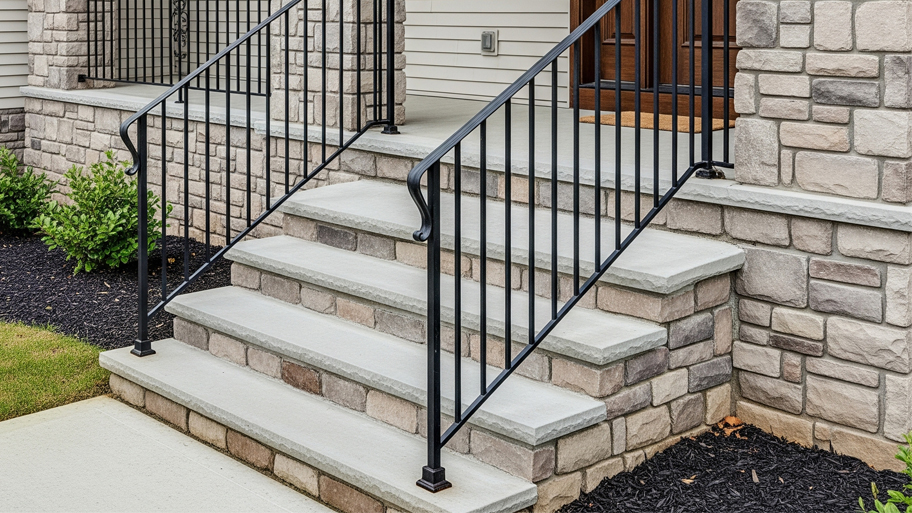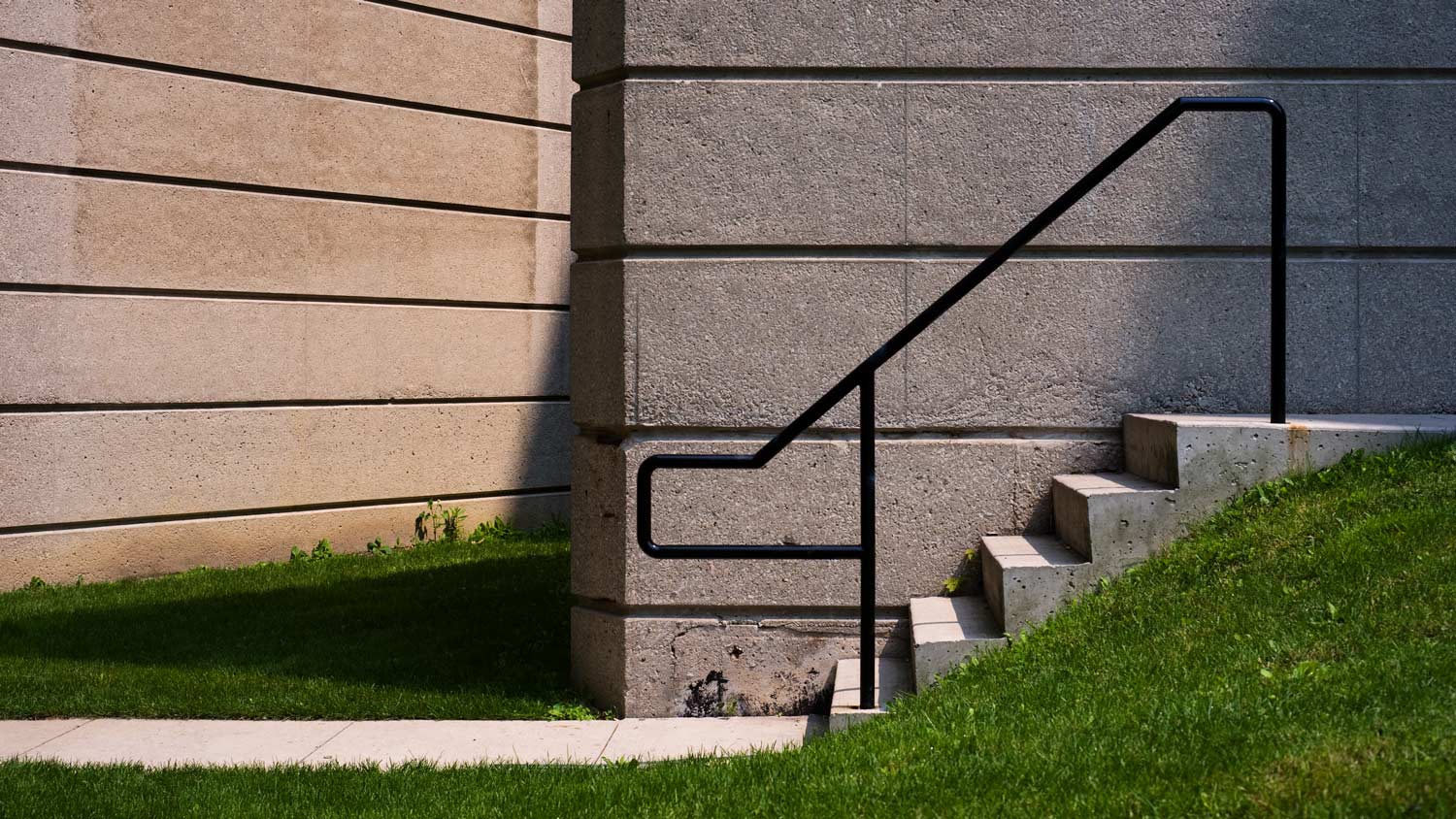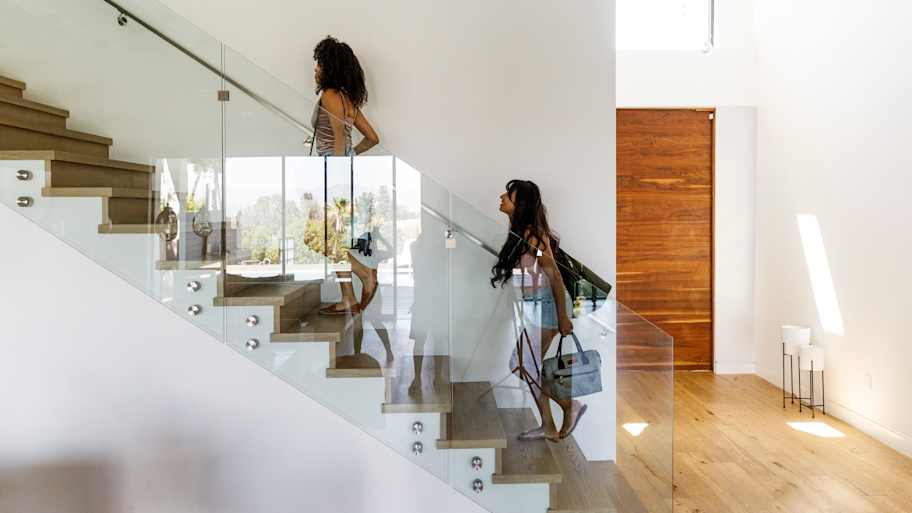
How much does outdoor railing installation cost? Find out the cost to install a railing on concrete steps, porches, and patios, including material and labor.
The average cost of widening a doorway ranges from $600 to $2,000, with most homeowners paying an average of $1,200. Factors include wall type, materials, labor, and permits.


Widening a doorway improves accessibility and the overall flow between rooms.
Major costs of widening a doorway include the type of wall, materials selected, and local labor rates.
Structural changes, such as altering a load-bearing wall, add to both the complexity and overall investment.
This upgrade can boost your home's appeal, especially for those seeking better mobility or open layouts.
Remember, permits and inspections are often required, and finishing costs like trim or painting can add $1 to $3 per square foot.
This article was created using automation technology and thoroughly fact-checked and edited by an Angi Editor in accordance with our AI policy.
The cost of widening a doorway ranges from $600 to $2,000, with a national average of $1,200. Homeowners may pay as little as $50 for a simple, non-load-bearing wall or up to $19,000 or more for complex, structural changes. Pricing depends on wall type, materials, and labor. Expect to pay $50 to $150 per hour for labor and $1 to $3 per square foot for finishing work.
Widening a doorway can make your home more accessible and functional. This guide will walk you through what to expect, cost factors, and tips for planning your project with confidence.
Widening a doorway involves several cost components, including labor, materials, permits, and cleanup. Labor is often the largest expense, especially if structural changes are needed. Materials include new framing, drywall, trim, and sometimes a new door. Permits and inspections may be required, adding to the total investment. Cleanup and debris removal are usually necessary to restore the area after construction.
For non-load-bearing walls, costs are lower since the process is less complex. Load-bearing walls require structural support, which increases labor and may involve a structural engineer. The type of new doorway—standard, double, or ADA-compliant—also impacts the price.
Additional expenses, such as moving electrical wiring, plumbing, or HVAC components, can push costs higher. Finishing touches like painting, new trim, or custom doors add to the final total.
| Project Type | Description | Average Cost Range |
|---|---|---|
| Non-load-bearing | Basic widening, no structural changes | $300–$1,200 |
| Load-bearing | Structural changes, new header required | $1,200–$6,000 |
| ADA-compliant | Extra width, possible custom framing/door | $2,000–$6,500 |
The size of the new doorway has a direct effect on total project cost. Widening from a standard to a double or ADA-compliant size requires more materials and labor. Standard interior doorways are 28 to 32 inches wide, while double doors can be 48 to 60 inches. ADA-compliant doorways must be at least 32 inches wide.
Increasing the width by six, 12, or 24 inches requires more extensive framing and finishing. Each additional increment raises material and labor costs, especially if the change impacts the wall’s structure or utilities.
| Doorway Size/Type (Inches) | Description | Cost Range |
|---|---|---|
| Standard (28–32) | Typical bedroom, bathroom, or closet | $300–$1,200 |
| Double (48–60) | For large openings, French doors | $1,500–$4,500 |
| ADA (32+) | Wide, accessible, custom requirements | $2,000–$6,500 |
Widening a doorway often involves several professionals. Labor rates depend on the expertise required, scope of work, and regional market. General contractors, carpenters, and structural engineers each play important roles.
A general contractor oversees the project, managing demolition, framing, finishing, and coordinating other trades. They charge $50 to $150 per hour or a project-based fee. Carpenters handle cutting the wall, installing headers, and finishing trim, with rates from $35 to $100 per hour or set project fees. For load-bearing walls, a structural engineer is needed to assess the structure and provide plans, charging $300 to $800 for consultation and drawings.
Regional labor costs can vary, with higher rates in dense urban markets or areas with high demand. Hiring a specialist, such as a structural engineer, is more expensive than a general contractor but is essential for safety in structural projects.
A general contractor manages the entire project, ensuring all stages are completed safely and efficiently. Their responsibilities include demolition, framing, finishing, and hiring or overseeing subcontractors. Expect to pay $50 to $150 per hour or a flat fee depending on project complexity.
Carpenters are responsible for hands-on work like cutting into the wall, installing new framing or headers, and finishing with trim. Their hourly rates range from $35 to $100, or they may charge a project fee based on the work required.
A structural engineer is essential when widening a load-bearing wall. They assess structural needs, provide calculations and drawings, and may visit the site for inspection. Fees typically range from $300 to $800 for consultation and plans.
Sometimes doorway widening projects require additional specialists to handle utilities or finishing work:
Electrician: $50–$120 per hour for moving outlets, switches, or wiring
Plumber: $45–$200 per hour if plumbing lines are present in the wall
Drywaller/Painter: $1–$3 per square foot for patching and finishing
HVAC Technician: $75–$150 per hour for adjusting or relocating ducts and vents
These pros ensure that any utilities affected by the project are safely and properly handled, and that the finished opening looks seamless in your home.
Where you live can have a significant impact on the cost of widening a doorway. Urban areas and regions with higher labor or material costs will see higher prices. For example, major cities on the coasts often have higher contractor rates than smaller towns or rural areas.
Even within the same state, costs can vary depending on local demand, permitting requirements, and access to skilled trades. Always get local quotes to understand the range in your area.
| Region/City | Description | Average Cost |
|---|---|---|
| New York, NY | High labor/materials, strict permitting | $2,500–$6,000 |
| Dallas, TX | Moderate rates, faster permitting | $1,200–$3,500 |
| Los Angeles, CA | High cost of living, longer timelines | $2,000–$5,500 |
| Midwest (general) | Lower labor/material costs | $700–$2,500 |
Several other factors can affect the overall cost of widening a doorway. Local taxes and municipal fees may apply, especially in cities with strict building codes. Contractors should carry insurance, and you may pay more for those with robust coverage. Warranties on workmanship or materials add peace of mind but can cost extra.
Special features, such as ADA compliance, decorative trim, or custom doors, also increase the final bill. Accessibility challenges, like working in tight spaces or multi-story homes, may require more labor. Unforeseen repairs—such as fixing hidden water damage—can add unexpected costs. Finally, post-construction cleanup and debris removal are often necessary to restore the area.
Demolition is often the first step, especially if the existing doorway or wall must be removed. This involves tearing out old framing, drywall, and trim. Costs include labor for safe removal, disposal fees for old materials, and prep work to protect your floors and furniture. Professionals may charge extra for moving heavy debris or for working in finished, furnished spaces.
Most municipalities require permits for structural work like widening a doorway, especially if it involves load-bearing walls. Permit costs vary from $50 to $500 or more, depending on local requirements. The contractor is usually responsible for securing permits, but homeowners should confirm this. Inspections are often required before and after work, which can affect the project timeline.
Some homeowners consider widening a doorway themselves to save on labor costs. DIY expenses include materials, tool rental or purchase, and debris disposal. Expect to spend $200 to $800 for basic materials, plus $50 to $300 for tool rentals. You’ll save on labor, but face risks like structural errors or code violations.
DIY requires skills in framing, drywall, finishing, and safety. Tools needed include saws, levels, safety gear, and finishing tools. For non-load-bearing projects, experienced DIYers may succeed, but structural or complex jobs should always involve a pro to protect your home’s integrity. Contact a woodworking professional near you for cost estimates.
Remodeling means making structural changes, such as expanding or relocating a doorway, installing new headers, or changing the layout. Renovation is more cosmetic, such as repainting, replacing trim, or updating hardware.
Remodeling is more expensive due to the structural work involved, but it can transform your space and improve function. Renovating is less disruptive and costs less, since it focuses on surface-level improvements. Choose remodeling if you need a larger, more accessible opening; opt for renovation if you want to refresh the look without changing the size or structure.
Remodeling can affect your home’s layout and flow, while renovation simply updates the existing space.
You don’t have to max out every cost factor when widening a doorway. Here are a few tips to help you save when you remodel your doorway.
Get multiple quotes from licensed professionals to compare pricing and services.
Choose standard door sizes and readily available materials to avoid custom costs.
Avoid moving plumbing, electrical, or HVAC systems if possible.
Take on finishing work like painting or trim installation if you have the skills.
Schedule your project during off-peak seasons for potential labor savings.
Reuse existing doors or hardware when they fit the new opening.
Limit customizations to features that truly matter for your space and needs.
Widening a doorway can improve your home’s value, safety, and accessibility. This upgrade is especially appealing for buyers seeking universal design or aging-in-place features. While the return on investment is moderate compared to major remodels, it can make your home more attractive to a wider range of buyers.
Quality workmanship, consistent design, and location all influence how much value you gain. In homes where accessibility and open flow are priorities, a well-executed doorway widening can set your property apart.
Home is the most important place on earth, which is why Angi has helped more than 150 million homeowners transform their houses into homes they adore. To help homeowners with their next project, Angi provides readers with the most accurate cost data and upholds strict editorial standards. We extensively research project costs to develop the pricing data you see, so you can make the best decisions for you and your home. We rely on reputable sources, including the U.S. Bureau of Labor Statistics, academic journals, market studies, and interviews with industry experts—all to ensure our prices reflect real-world projects.
Want to help us improve our cost data? Send us a recent project quote to [email protected]. Quotes and personal information will not be shared publicly.
From average costs to expert advice, get all the answers you need to get your job done.

How much does outdoor railing installation cost? Find out the cost to install a railing on concrete steps, porches, and patios, including material and labor.

Find out how much carpenters charge, including average rates, cost factors, and tips to help you budget for your next carpentry project.

When calculating the cost of building a treehouse, consider the size, types of materials, and design. This guide will help you figure out what to budget.

Learning how to install a railing on concrete steps requires taking extremely accurate measurements to purchase the right size and design of railing.

Your installed glass stair railing cost depends on factors such as materials, size, and complexity. Discover the ones that will affect yours the most.

If you’re preparing to install or replace stairs or railings made of wood, here are the stair and railing questions you should be asking a pro about the project.